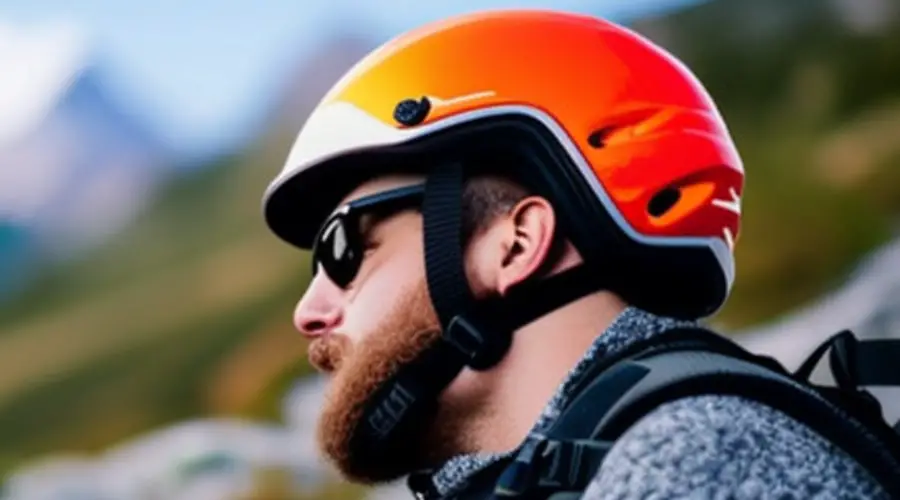When it comes to wearing a helmet while engaging in outdoor activities like cycling, skateboarding, skiing, or snowboarding, the most common question that arises in the minds of enthusiasts is whether the helmet should be tight or loose. It is imperative to wear a helmet that fits well, but at the same time, it shouldn’t be too tight that it causes discomfort or too loose that it falls off during impact. In this article, we will discuss the ideal fit of a helmet and factors that determine the right helmet size.
Importance of Wearing a Helmet
Before diving into the details of how a helmet should fit, it’s important to understand why wearing a helmet is essential. Head injuries are the most common cause of fatalities in outdoor activities like cycling, skateboarding, skiing, or snowboarding. According to a report by the Centers for Disease Control and Prevention (CDC), helmets reduce the risk of head injury by 50%, and the risk of fatal head injury by 65%. Hence, wearing a helmet can save your life in the event of an accident.
Factors to Consider When Choosing a Helmet
Head Size and Shape
The first factor to consider when choosing a helmet is the head size and shape. The helmet should fit snugly on your head, but it should not be too tight that it causes discomfort. Measure the circumference of your head just above your eyebrows and ears to determine the helmet size. Different helmets come in different shapes and sizes to fit different head shapes, so it’s essential to choose a helmet that matches your head shape.
Adjustable Features
The second factor to consider is the adjustable features of the helmet. Most helmets come with adjustable features like chin straps, rear stabilizers, and sizing pads that can be adjusted to get the perfect fit. These adjustable features ensure that the helmet stays secure on your head during impact and doesn’t wobble or fall off.
Activity Type
The third factor to consider is the type of activity you will be engaging in. Different activities require different types of helmets. For instance, cycling helmets are designed to protect against impacts from straight falls, while skiing helmets are designed to protect against high-speed collisions. Make sure to choose a helmet that is designed for the activity you will be engaging in.
How Should a Helmet Fit?
Snug Fit
The helmet should fit snugly on your head, without any pressure points or gaps between the helmet and your head. It should sit level on your head and cover the top of your forehead without obstructing your vision. The chin strap should be snug but not too tight, with no more than two fingers’ space between the strap and your chin.
No Wobble
The helmet should not wobble or move around on your head. It should stay securely in place during impact, without any lateral or vertical movement. If the helmet wobbles or moves around on your head, it’s too loose and needs to be adjusted.
No Discomfort
The helmet should not cause any discomfort or pain. If you feel pressure points or soreness on your head, it’s too tight and needs to be adjusted or replaced with a larger size.

Proper Ventilation
The helmet should have proper ventilation to keep your head cool and comfortable during outdoor activities. Look for helmets with vents or channels that allow air to flow through and prevent overheating.
Related: Should I Replace My Helmet if I Drop It?
FAQs:
1. Can a helmet be too tight?
Yes, a helmet can be too tight, and it can cause discomfort, pain, and even headaches. A helmet that’s too tight can also affect the ventilation and the effectiveness of the helmet in protecting your head during an impact.
2. Can a helmet be too loose?
Yes, a helmet can be too loose, and it can fall off during an impact or fail to protect your head effectively. A helmet that’s too loose can also wobble or move around on your head, causing distraction and discomfort.
3. How do I know if a helmet is the right size?
To know if a helmet is the right size, measure the circumference of your head just above your eyebrows and ears. Then, compare the measurement with the size chart provided by the helmet manufacturer. Try on different sizes and shapes to find the one that fits snugly without causing discomfort.
4. How often should I replace my helmet?
It’s recommended to replace your helmet every five years or after an impact, whichever comes first. The materials in the helmet can degrade over time, and the effectiveness of the helmet in protecting your head can diminish. If your helmet has been in an accident, even if it looks fine, it should be replaced.
5. Can I adjust the helmet after I purchase it?
Yes, most helmets come with adjustable features like chin straps, rear stabilizers, and sizing pads that can be adjusted to get the perfect fit. Follow the manufacturer’s instructions on how to adjust the helmet, and make sure it fits snugly without causing discomfort or wobbling.
Conclusion
The ideal fit of a helmet should be snug, without any pressure points or gaps, and no wobbling or discomfort. The adjustable features of the helmet should be used to get the perfect fit, and the helmet should be designed for the activity you will be engaging in. Wearing a helmet that fits well can protect your head and save your life in the event of an accident.
Helmetslab is a website that focuses on providing in-depth reviews and information about different types of helmets, including motorcycle helmets and others helmets. I am writing a post with proper research on the info that helps helmet users.

